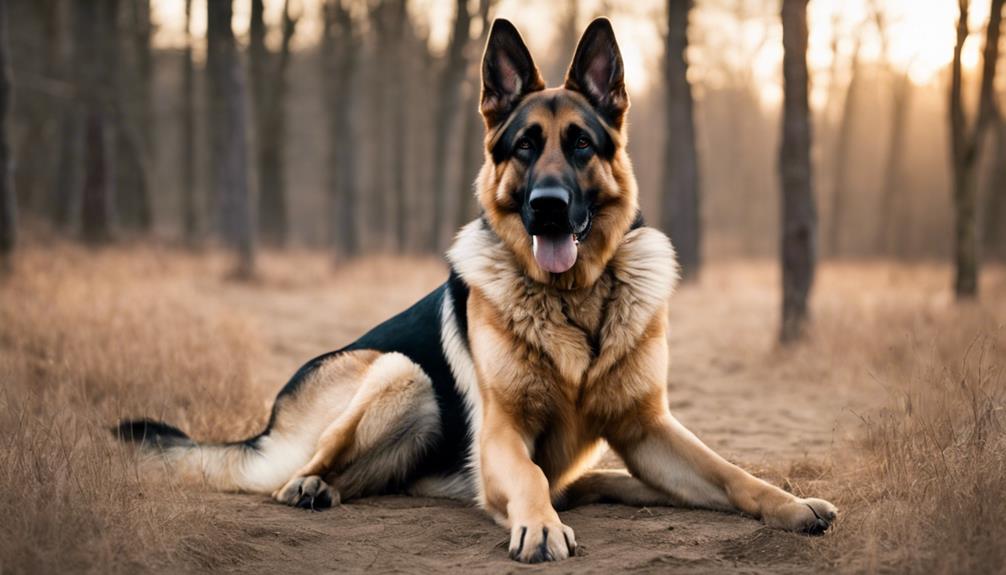As you envision a majestic German Shepherd, picture the strength and sturdiness that comes with large-boned traits.
But how can you tell if a German Shepherd possesses these characteristics? It's not just about size; it's about proportions, paw size, overall build, and even the intricacies of genetics and breeding.
Understanding these elements will provide you with insights into what sets a large-boned German Shepherd apart from the rest.
Body Proportions
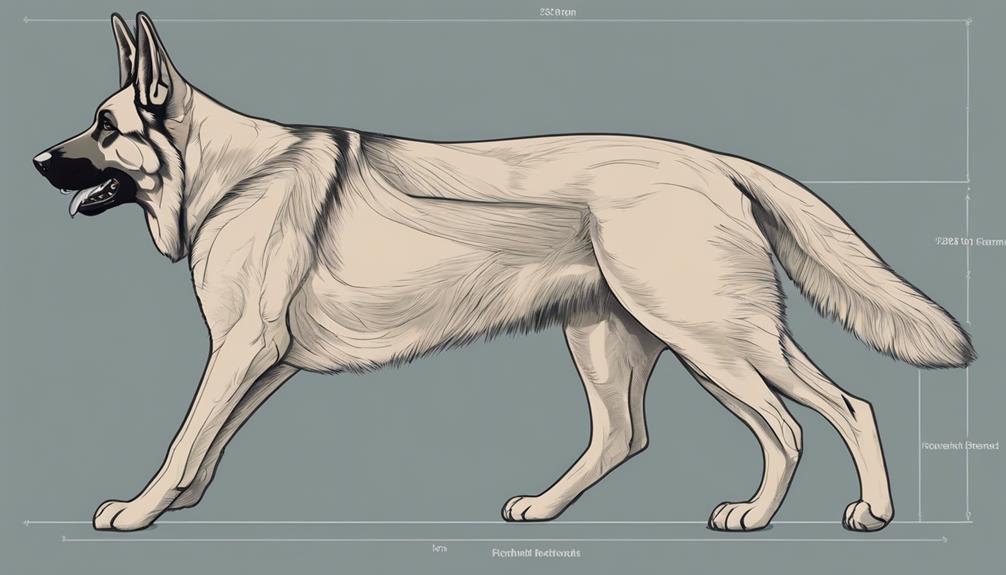
When identifying large boned traits in German Shepherds, observe their body proportions to determine if they meet the breed standards. German Shepherds with large bones typically exhibit well-defined muscle structure and a balanced body shape. The muscle definition in these dogs is prominent, especially around the shoulders, hindquarters, and neck. Their bodies appear strong and sturdy, reflecting their robust bone structure. To identify large boned traits accurately, pay attention to the overall balance of muscle distribution throughout the body.
In terms of growth patterns, German Shepherds with large bones may experience slightly different growth rates compared to their smaller counterparts. It's essential to monitor their growth carefully to ensure that it aligns with breed standards. Proper nutrition and exercise play crucial roles in supporting the development of their bones and muscles. Additionally, monitoring joint health is vital for large boned German Shepherds, as their size and weight can put extra strain on their joints. Regular exercise, a balanced diet, and appropriate supplements can help maintain their joint health and overall well-being.
Paw Size
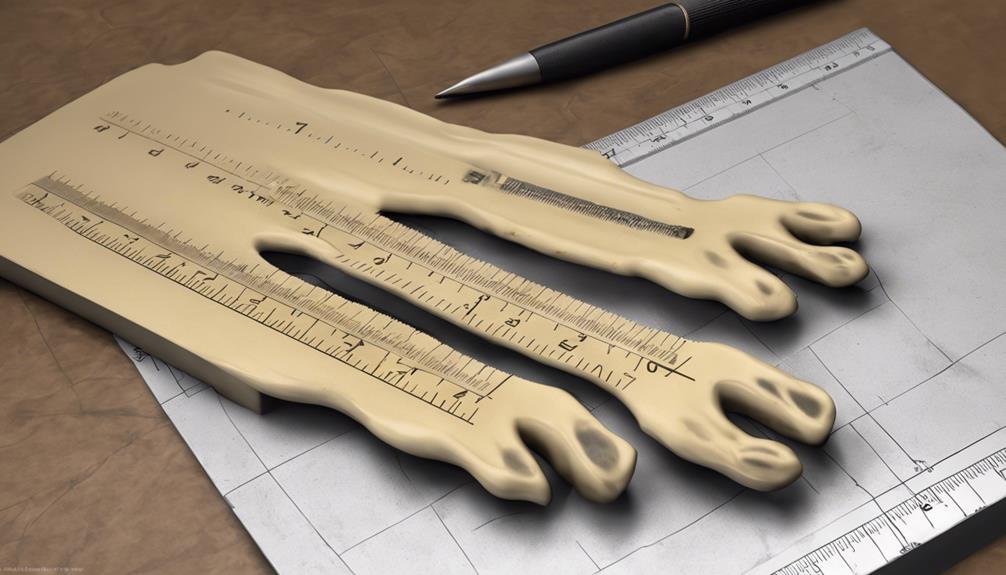
Large boned German Shepherds often display proportional paw sizes that correspond to their robust bone structure, reflecting their breed standards. When examining a German Shepherd's paw size, it is essential to consider the overall build and size of the dog. The paw size of a large boned German Shepherd is typically larger compared to standard-sized individuals, in line with their sturdy frame.
To further understand how paw size correlates with large boned traits, let's delve into a comparison table showcasing the differences in paw size between a standard German Shepherd and a large boned German Shepherd:
| Paw Size | Standard German Shepherd | Large Boned German Shepherd |
|---|---|---|
| Front Paws | Medium | Large |
| Hind Paws | Moderate | Large |
| Toes | Proportional | Broad |
| Coat Color | Various colors | Commonly black and tan |
| Temperament Traits | Intelligent, loyal, confident | Confident, courageous, alert |
The larger paw size in a large boned German Shepherd is often accompanied by a thicker coat, especially around the paws, providing insulation and protection. Additionally, the temperament traits of large boned German Shepherds tend to align with their physical characteristics, exhibiting confidence, courage, and alertness, which are essential traits for their roles as working dogs.
Overall Build
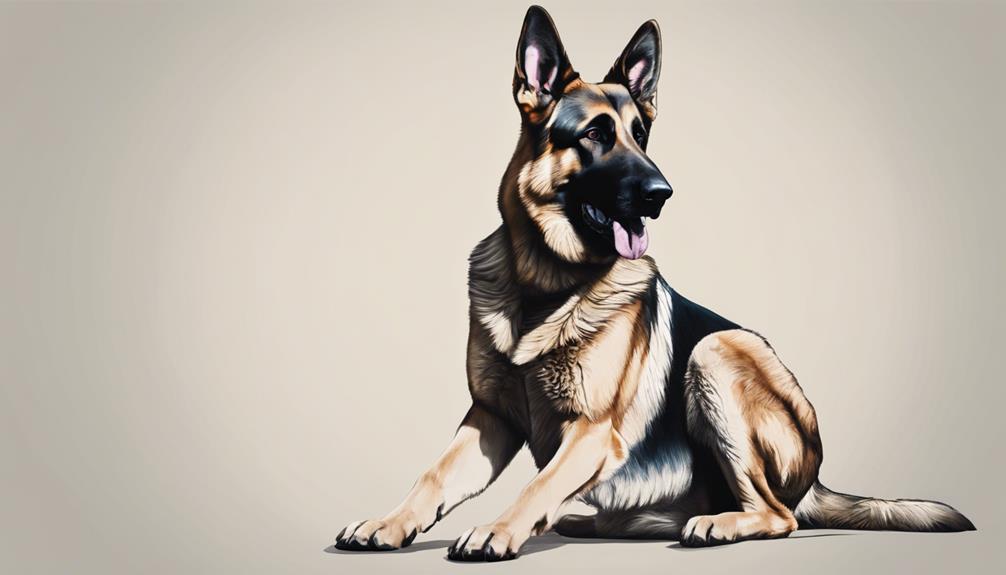
In assessing the overall build of a large boned German Shepherd, one must consider not only their size but also the proportions and muscularity that contribute to their robust appearance. Here's what you should look for:
- Proportions: Large boned German Shepherds typically exhibit well-balanced proportions, with a strong and deep chest that's in proportion to their overall body length. Their legs should be sturdy and well-muscled, supporting the frame adequately.
- Muscle Definition: A key characteristic of large boned German Shepherds is their well-defined musculature. When observing these dogs, pay attention to the muscular definition along their shoulders, hindquarters, and back. Well-developed muscles contribute to their powerful appearance and overall strength.
- Gait Analysis: Another important aspect of assessing a large boned German Shepherd's overall build is conducting a gait analysis. These dogs should move with a fluid and effortless gait, displaying good reach and drive. Observing their movement can provide insights into their joint health and overall physical condition.
Weight and Height
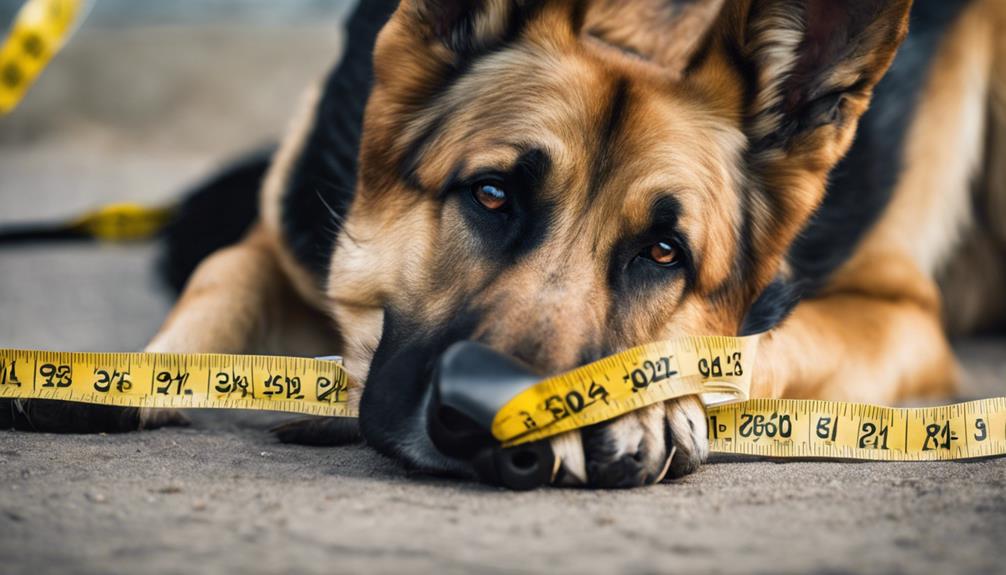
Considering the robust appearance of a large boned German Shepherd, an essential aspect to evaluate is their weight and height in relation to their overall build. German Shepherds are a medium to large-sized breed with males typically standing between 24 to 26 inches at the shoulder, while females range from 22 to 24 inches. Weight-wise, males weigh around 65 to 90 pounds, and females typically weigh between 50 to 70 pounds. These figures are in line with the American Kennel Club's breed standards for German Shepherds.
As puppies, German Shepherds exhibit rapid growth patterns, with noticeable increases in height and weight within the first few months. It's crucial to monitor this growth to ensure they're developing correctly. Large boned German Shepherds will have a sturdy frame, with well-defined musculature and a balanced body composition. Their height and weight should align with breed standards, reflecting a harmonious blend of strength and agility.
When assessing a German Shepherd's weight and height, consider their muscular development alongside their bone structure. A large boned German Shepherd should have a solid, athletic build without appearing overweight or underweight. By understanding the expected height, weight, and body composition of large boned German Shepherds, you can better identify and appreciate these impressive traits in the breed.
Genetics and Breeding
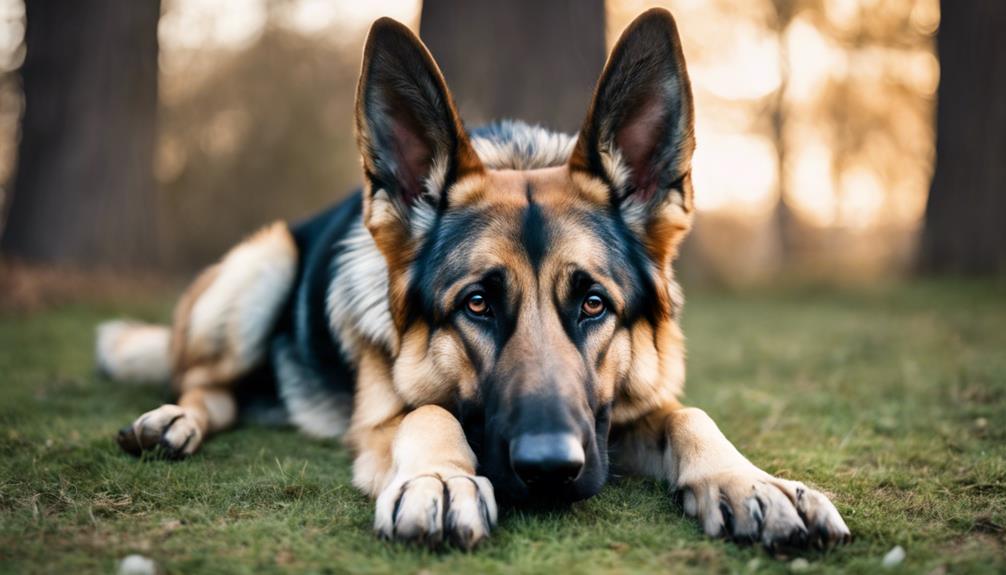
To understand the genetic factors influencing the large boned traits in German Shepherds, it's crucial to delve into the complexities of their breeding practices. German Shepherd coat color genetics play a significant role in determining the physical characteristics of the breed. Breeders carefully select mating pairs based on their coat colors to enhance certain traits like bone size. Additionally, breeding techniques such as selective breeding and genetic testing are utilized to ensure the offspring inherit the desired large boned traits.
When it comes to temperament traits, breeding standards are meticulously followed to maintain the breed's desired characteristics. German Shepherds are known for their intelligence, loyalty, and protective nature. Breeders focus on pairing dogs with stable temperaments to produce offspring with similar traits. Through generations of selective breeding, German Shepherds with large bone structures have been consistently produced.
Understanding the intricate relationship between genetics and breeding is essential in perpetuating the large boned traits in German Shepherds. By meticulously selecting mating pairs based on coat color genetics and adhering to breeding standards that emphasize desired temperament traits, breeders can continue to produce German Shepherds with the impressive bone size that's characteristic of the breed.
Frequently Asked Questions
Are German Shepherds With Large Bones More Prone to Joint Issues or Other Health Problems?
Large-boned German Shepherds may be more prone to joint issues due to their bone density and size fluctuations. Genetic predisposition can play a role in health problems. Regular vet check-ups and proper nutrition are crucial for optimal joint health.
Can a German Shepherd's Bone Size Affect Their Agility or Athleticism?
Your German Shepherd's bone structure plays a crucial role in their agility and athleticism. Larger bones can enhance strength and endurance but may slightly reduce speed and flexibility. Overall, a balanced bone size is key for optimal performance.
How Can You Tell if a German Shepherd Puppy Will Grow up to Have Large Bones?
To predict if a German Shepherd puppy will have large bones, study growth patterns and genetics. Consider breeding standards and conformation. Traits like broad chest, thick limbs, and overall size can indicate potential for large bone structure.
Do German Shepherds With Large Bones Require a Different Diet or Exercise Routine Than Those With Smaller Bones?
When caring for German Shepherds with large bones, it's essential to tailor their diet and exercise routine to support their size. Consider adjusting their food portions and incorporating low-impact activities to prevent joint stress and promote overall well-being.
Are There Any Specific Training Techniques or Considerations for Working With a German Shepherd That Has Large Bones?
When working with a German Shepherd with large bones, consider their bone structure. Tailor training to support their size impact, focusing on agility exercises that strengthen muscles and joints. Adjust routines to prevent strain and promote overall health.
Conclusion
You've learned about the key traits that indicate a German Shepherd is large boned. By examining body proportions, paw size, overall build, weight and height, genetics, and breeding, you can confidently identify these characteristics in this breed.
Remember, the larger bone structure of a German Shepherd can contribute to their strength and stability, making them well-suited for various tasks.
Next time you see a German Shepherd, look for these traits to determine if they're large boned – it's all in the details.
